& Nijmegen
To go Back at any time,
use Browser's "Previous Page"
Our guided tour of Deventer began at the market square:
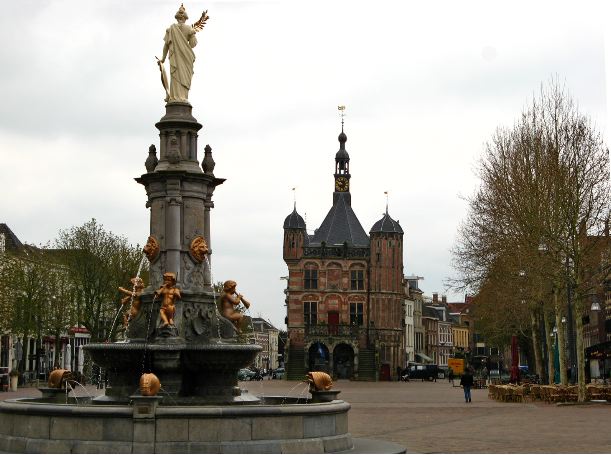
In the foreground is the Queen Wilhelmina Fountain and in the center background is the town weigh house circa 1528. At one time, goods to be sold in the market place were weighed by the town as most vendors did not have accurate scales of their own.
These are the twin towers of the Bergkerk Church from the 12th century. Notice the hoist on the left tower:
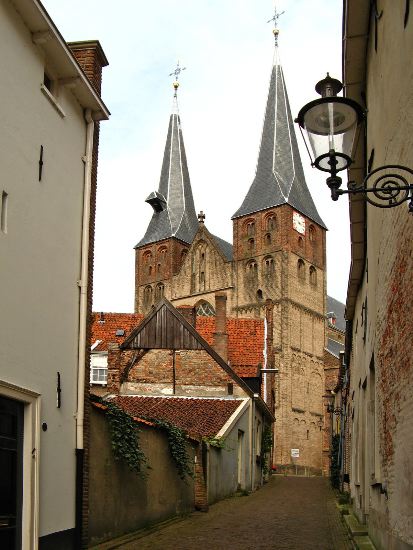
Here’s another street we wandered down, following this arm-in-arm couple:
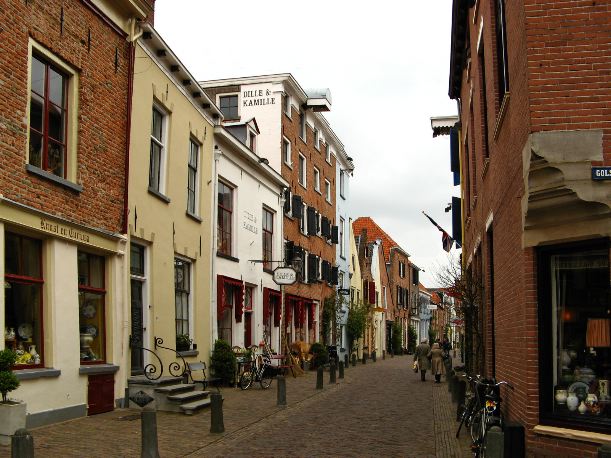
The building below had an attractive front but it was still an odd sight --- the sides were askew to the facade and very plain --- perhaps, once covered by other buildings:
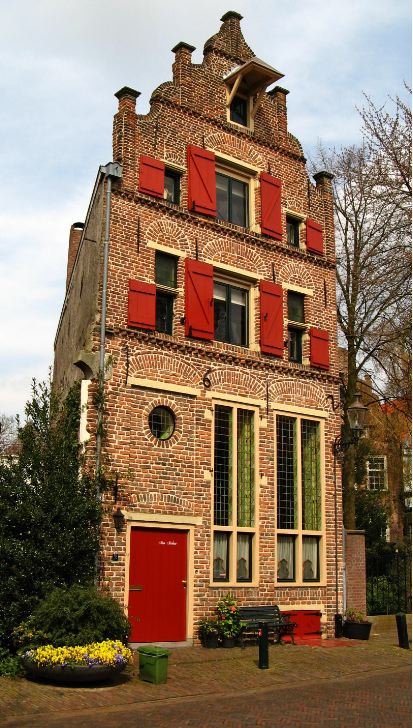
For hundreds of years, this town has been famous for its “Deventer Cake”. In case you wondered, we tasted some and thought it similar to “grandma’s fruitcake” without the citrons.
Before rejoining the ship, our coach took us to the Airborne Museum in Oosterbeek. There we saw an informational film and excellent dioramas describing World War II action in this area. In particular, the ill-fated Operation Market Garden (as in the movie “A Bridge Too Far”) was well explained.
For a change of pace, next morning in the ancient town of Nijmegen, we skipped the guided tour and struck off on our own. Soon enough, we arrived at the “old world” Grote Markt (or large market). In the left background, mostly hidden, is St. Steven’s Church and, on the right, the Weeghuis (or weigh house):
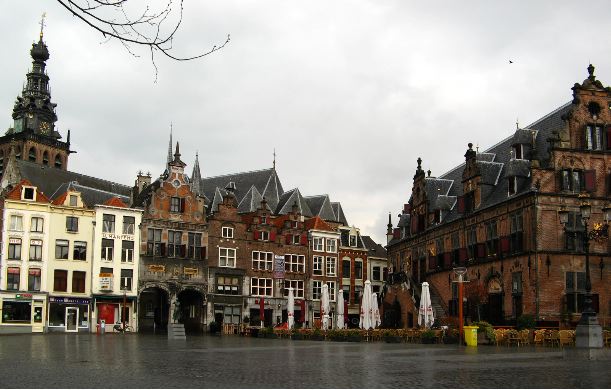
St. Steven’s Church is so big and so shoehorned into tight quarters, that it seems wings would be needed to photograph it properly. Not so, the impressive Weeghuis:
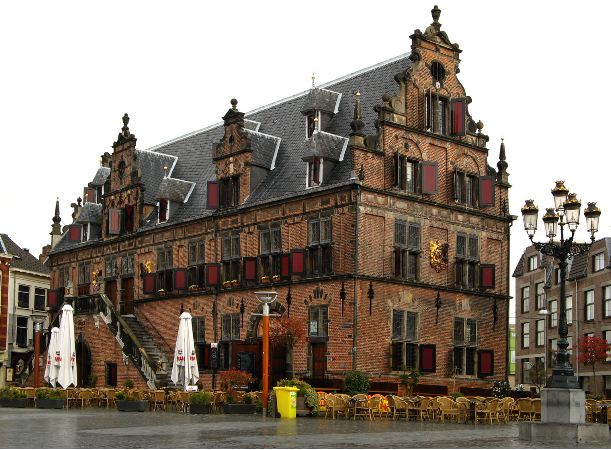
Inside are several restaurants.
Nijmegen is truly an ancient town --- even sustaining a Roman encampment at one time. Sadly, though, little remains of Nijmegen’s early buildings. That is partly due to some structures being torn down by later rulers or city fathers and partly due to bombardment in WWII. The central part of this Dutch town was heavily bombed by the Allies when it was mistaken for a German city. Consequently, much of the downtown area is postwar and less fascinating than the great market square.
Emperors Charlemagne and Barbarossa both left their mark on Nijmegen at a place known today as Valkhof Park. Because it was a strategically valuable site overlooking the Maas River, Charlemagne built a large residence there in the 8th century called the Valkhof. In 1155 --- long after Charlemagne --- Barbarossa created his own castle on the site using recycled stone from Charlemagne’s quarters. This castle was not to last either. In the 18th century, what remained of the stonework was either sold off by the city fathers or destroyed by French invaders.
All that remains from this early period are two chapels. The first, called Sint Nicolaas, is in fairly decent shape despite its age:
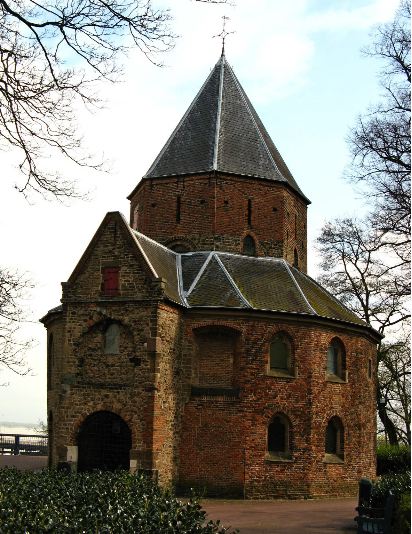
The misnomer “Charlemagne Chapel” is sometimes applied to it, but its construction date has been determined to be 1030, some 200 years after Charlemagne died.
Of the other, known as Sint Maartens, only a half-shell remains:
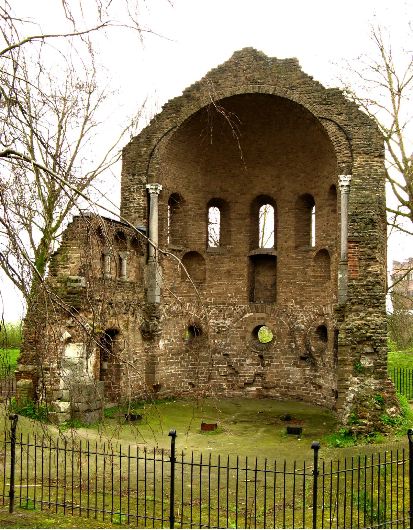
It is called the “Barbarossa Chapel” because it actually belonged to one of the largest buildings of his castle.
Some idea of the vantage point afforded by the Valkhof Park site is apparent in this photo looking down on the Maas River:
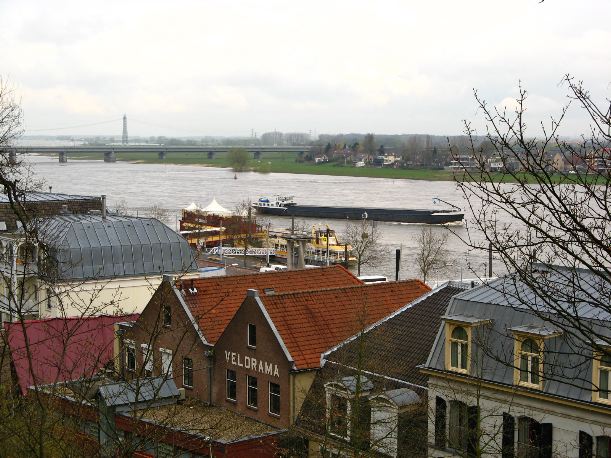
In contrast to the paucity of Nijmegen’s archeological treasures, the next city we visited, Maastricht, was to make up for it. About as old as Nijmegen, it fared much better in WWII.